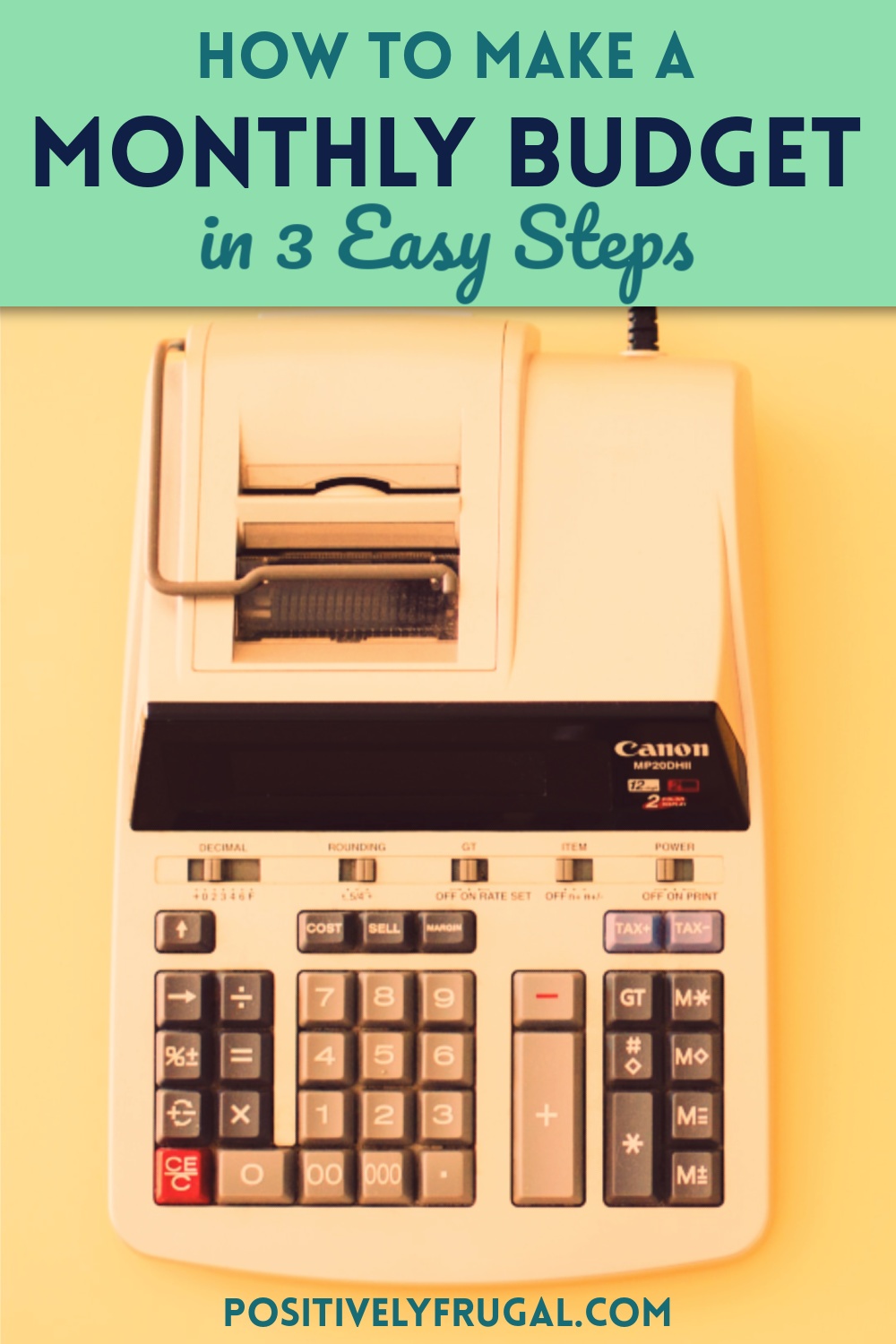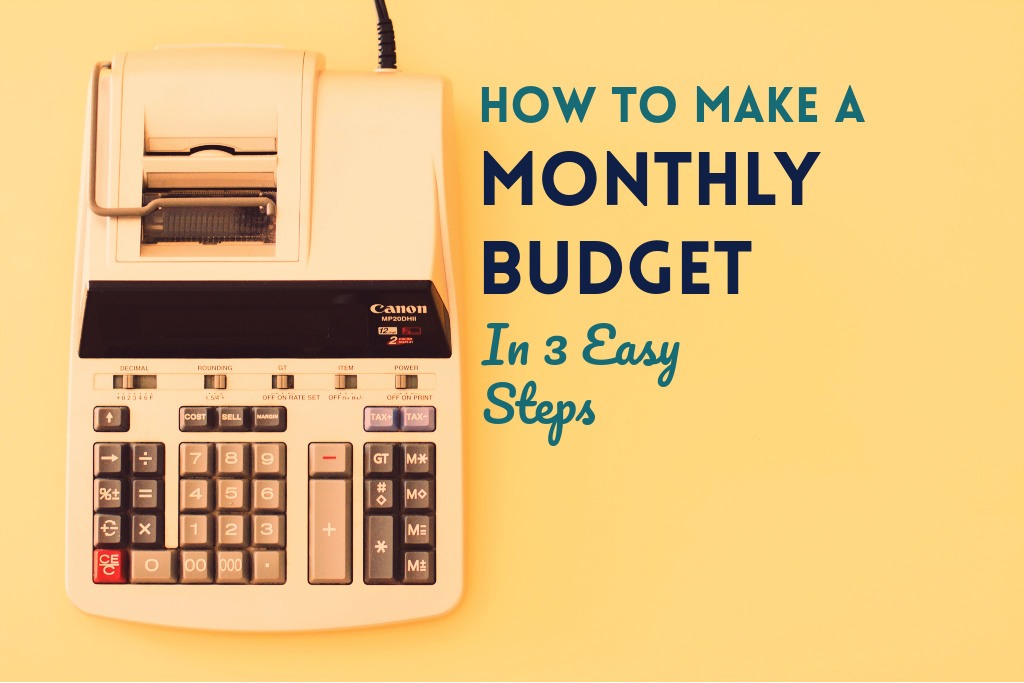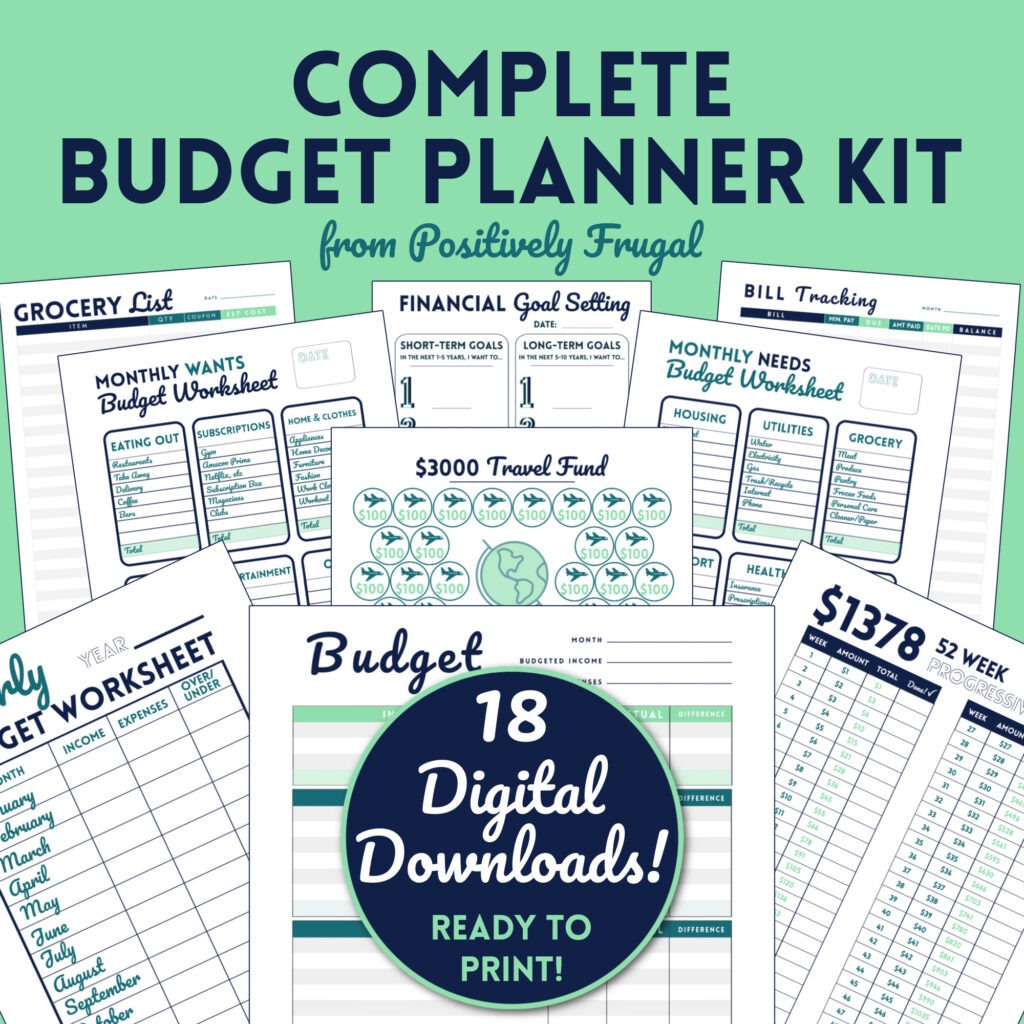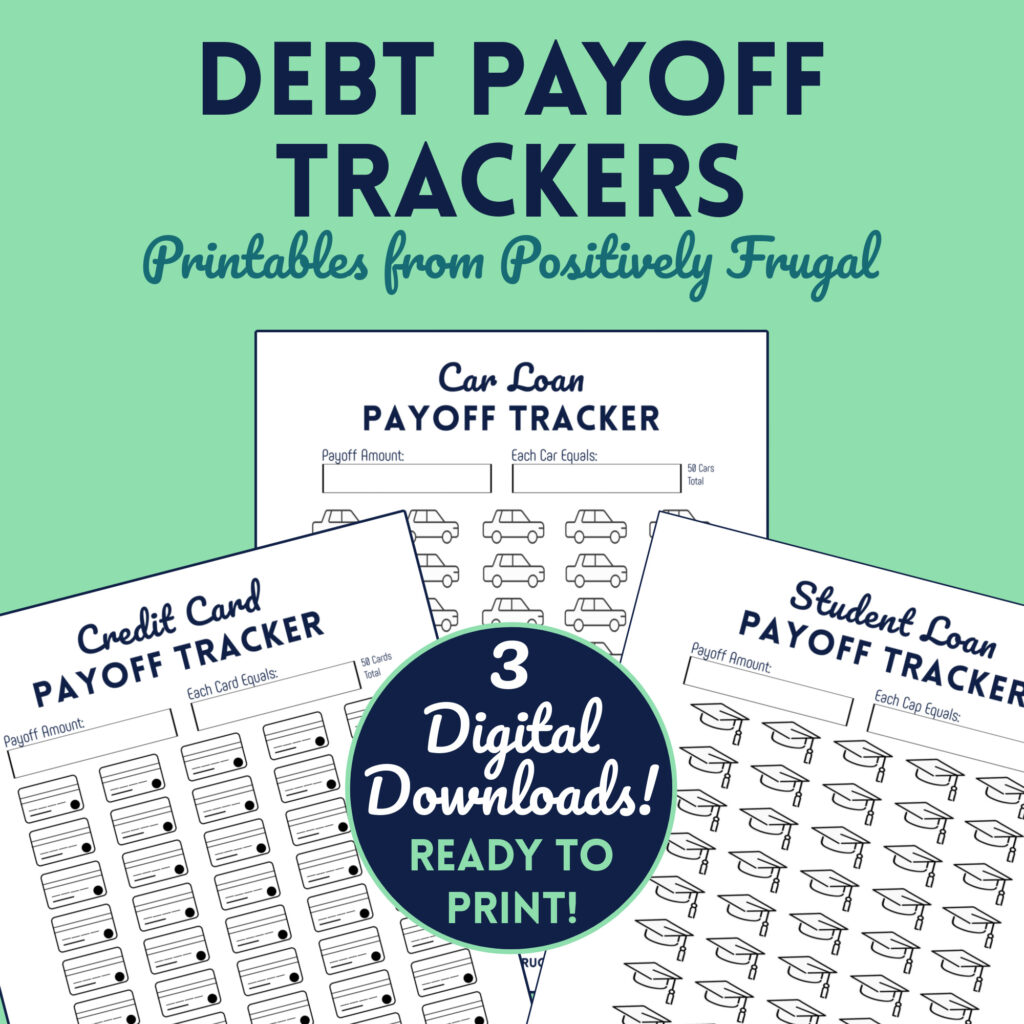Some of the links on this site are Affiliate Links and if you use them to make a purchase, we may earn a commission. For more information, read our Disclosure Policy.
The best way to pave a path to financial success is to make a monthly budget. Reaching financial goals is hard work – and a monthly budget is the tool that will help get you where you want to be. The best part is that creating a monthly budget is not complicated or cumbersome. Let me show you how to make a monthly budget in 3 easy steps!
How Does a Monthly Budget Worksheet Help You?
Before we jump into the step-by-step instructions on how to do a monthly budget, let’s chat about the benefits of creating monthly budget.
Prior to making a my monthly budget, I was skeptical of its purpose. When money came in, I paid my bills and saved what I could. Why did I need to make a monthly budget? I so defiantly thought.
Well, when I made a goal – a big, lofty finance goal – it was clear I needed a strategy. While being optimistic about my goal was essential, I needed a lot more than wishful thinking and good vibes to succeed.
As reluctant as I was, I learned how to plan a monthly budget…and it was eye-opening. I was astounded as how carelessly I spent and how haphazardly I saved. By simply jotting down the figures – the cold hard facts of my finances – I could clearly see what expenses I could cut and how much more I could save. My monthly budget became the blueprint and helped me organize my finances.
Why Should I Make a Monthly Budget?
When you learn how to set up a monthly budget, you get a better overview of your entire money situation. With a clear view of your finances, you can pave a direct path towards your finance goals.
Learning how to create a monthly budget puts you in charge of your finances. You get to dictate exactly where you spend your money and decide precisely how much to save. A monthly budget can help you stop wasteful spending and get out of debt.
Additionally, with written monthly budget plans, you can track your progress and see how your money situation change over time. By budgeting monthly, you can use your written plan (and past monthly budgets) to help you best make future financial decisions.
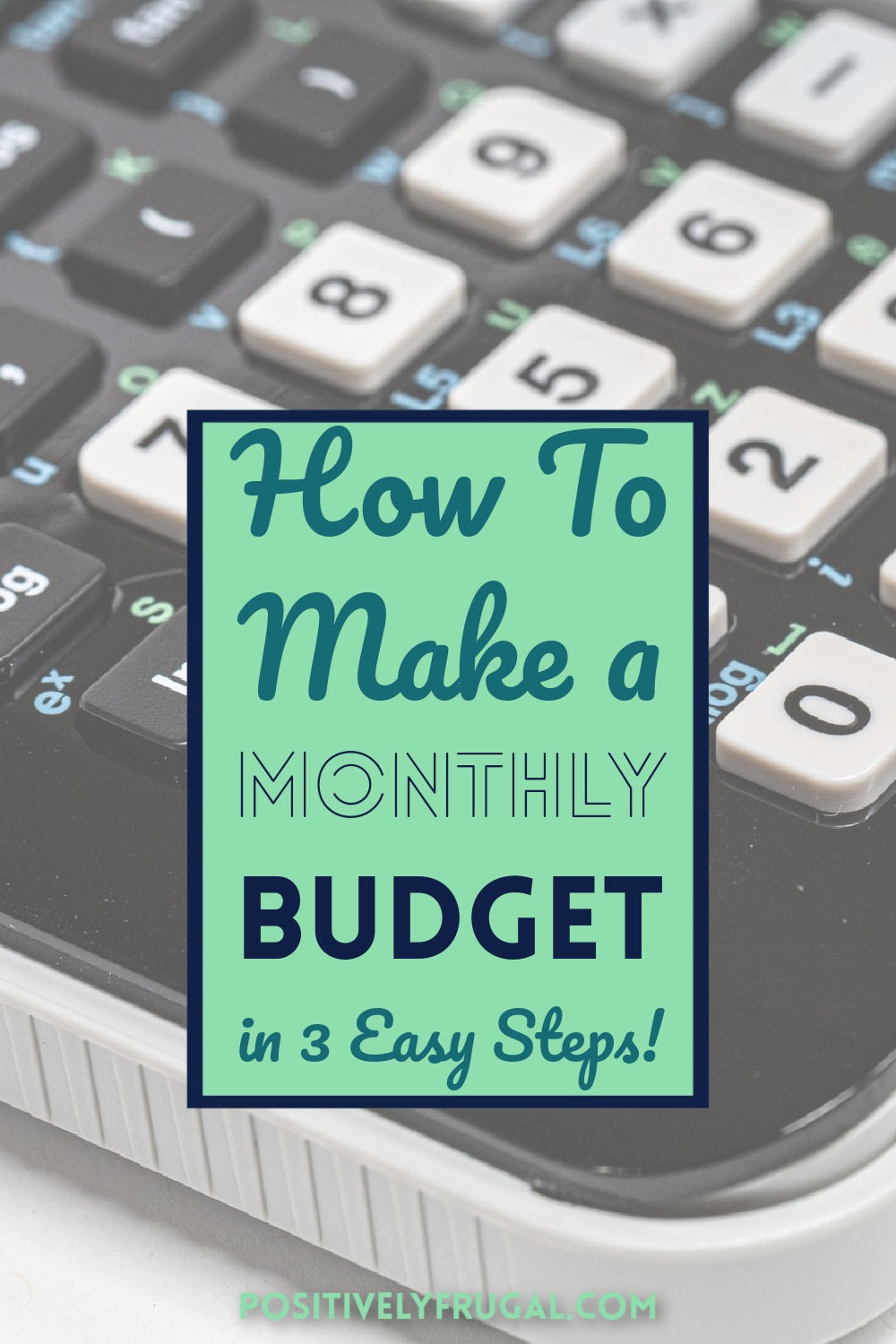
Ways to Create Monthly Budget
There is no right or wrong way or golden ticket on how to make a successful budget. What really matters is that you create an actionable monthly budget that best helps you meet your personal finance goals.
That said, there are two popular ideologies regarding types of monthly budgets: Zero Sum and The 50/30/20 rule. Depending on your personal goals and money personality, one may work better than the other for you when you create your own monthly budgeting plan.
How To Create a Budget with Zero Sum
In a Zero Sum budget, every incoming dollar is specifically spent – and your spending is aligned with your goals.
This is the Dave Ramsey monthly budget method, which you can read more about – as well as other budgeting tips – in his book.
This is how it works: When you add up your income and subtract your expenses, you will get $0. In order to achieve this when planning a monthly budget, debt elimination and savings are items that are paid – just as housing, food and insurance are.
By assigning a specific use for every single dollar, you take absolute control over your money. Nothing is left in the balance; there is no uncertainty. You clearly dictate where your money goes and, in doing so, you can achieve the financial goals that you set for yourself.
How To Budget for the Month using the 50/30/20 Rule
The 50/30/20 budgeting method differs in that it offers a percentage breakdown for your suggested monthly budget. In this type of budget, 50% of spending goes toward necessities (needs), 30% is for non-essentials (wants) and 20% is used for savings (and debt repayment).
Elizabeth Warren developed this method in the book, All Your Worth: The Ultimate Lifetime Money Plan. This budget type is helpful in giving people a general idea of how much of their money they should be spending and where. It should be noted, too, that if you spend less than 50% on needs, the extra money should be applied to savings, rather than wants.
Pro Tip: Our forms for monthly budget tracking are the perfect tool! In fact, you can use our Monthly Budget Template for the 50/30/20 method or for how to make a zero-based budget.
How To Make Monthly Budget in 3 Steps
Learning how to make a simple budget is not particularly difficult – so don’t over think it!
There are just 3 steps to how to make a monthly budget for home: Analyze, Plan, Action. After I cover these basics of how to prepare a monthly budget, I share a few examples and tips for staying on track with your monthly budget planning.
Get your FREE Printable Monthly Budget form here and get started today!
Step 1: Analyze the Numbers
The first step of how to make a basic budget is to analyze the numbers. You need to look at the actual figures of your income and expenses. You will need to do a little math, so grab a calculator, a pencil and a piece of paper (or use my Free Printable Monthly Budget Form).
Monthly Income
The first number you need to create a monthly budget is your income. You will want to use your Net Income – the amount that you take home after taxes, which is also known as your Take Home Pay. If you work on a salary, it should be fairly easy to calculate your monthly income.
If you are paid hourly (and work varied hours) or work a commission- or tip-based job, you will need to estimate your income in order to prepare a monthly budget.
For the purposes of a variable budget, I recommend going low rather than high if you don’t make a set income. (If, at the end of the month, you have an excess income, that amount can simply be applied toward debt or savings – which is better than over-estimating your take home pay and coming up short for things like food and rent).
Monthly Expenses
Next, you need to analyze your monthly expenses. Of course, this includes your necessities – like your mortgage/rent, utilities, food, car payment, personal loans repayment and other fixed expenses – but to really scrutinize your spending, you need to write down all expenditures.
As you will see in my personal budget example (which you will find below), I use three main categories for monthly budgeting: Needs, Wants and Debt Repayment/Savings.
Under each major category of the basic monthly budget, I break down the expenses into small categories. When you use categories in your budget for the month, you can better visually see where cuts can be made.
What To Include in a Monthly Budget
If you are wondering what to include in a monthly budget, the answer is everything! All expenditures – whether small or large, paid daily or yearly – need to be accounted for in your monthly worksheet.
Basically, your budget needs to account for every single dollar and cent that you passes through your hands (or through your bank account) every month.
So, in addition to the necessities, make sure to budget for entertainment and hobbies. You also need to account for any money given as donations, payments into your retirement plan and the amount that you are putting into other savings, too.
The entire point of a budget is to be in control of your money; you will only hold the reins if you honestly include all of your expenditures.
Annual Expenses
For known annual expenses – like car insurance, memberships and subscriptions, you can decide if you want to include the full amounts to be paid in the month that you pay them or average them over time.
If you decide to average the expected expenditures over 12 months and stash the money in a savings account, it is best to set up a Sinking Fund so that you know exactly where the money is when it comes due.
Expense Categories
All of the expenses for your monthly budget should be categorized – and you can create as many categories as you want. My budget worksheet – which you get for FREE when you subscribe to Positively Frugal – breaks down spending into common expense categories to help make sure you include all out-going money in your budget.
You will want to tally all of your costs for each category and then enter them into the budget form.
How To Calculate Expenses for Monthly Budget
If you use a credit card for most or all of your spending, then use your last few statements to find the figures for your spending. However, if you use cash, then guess for now.
You will need to spend at least a month – maybe two – tracking your expenses in detail before you will be able to complete your monthly budget accurately.
Do The Math
Once you have identified all of your monthly expenses, add up the amounts for each category and enter them on your budget worksheet. Next, add up all of your expenses for the month.
Finally, subtract your total expenses from your income (remember, your take home pay). What do you have left? Do you have a surplus…or are you spending more than you make?
Step 2: Make a Plan
Tallying your earnings and expenses is just the first step in how to budget monthly. The next step is to make a plan that will allow you to reach your goals.
Use Your Income and Expenses to Make a Monthly Budget
To prepare a monthly budget plan, rearrange the numbers so that your goal can be achieved. Basically, there are two ways to make the math work: Earn more or spend less.
Note: If you are creating a family monthly budget, be sure that all family members are part of this process; everyone needs to be on board!
Spend Less
The best way to make a monthly budget work is by searching for ways to cut spending. It is likely that the first step revealed some unsavory spending habits that you can reduce or eliminate.
For example, your daily coffee from the café can easily cost upwards of $100 per month or the gym membership that you rarely use could be eating up $80 of your monthly income (mine was!). If you need to find more money in your budget, look for the non-essentials that you can remove from your expenses.
Adopt Frugal Ways
If you have set saving goals, you need to realign your budget to meet those goals. Once you cut spending from your monthly budget in obvious places, get a little more creative to find savings solutions. Learn to become frugal. Use my tips for frugal food (including appetizers and frugal snacks!) and discover a more frugal lifestyle.
Earn More
Conversely, if you have cut your expenditures as far as you are willing to go and still don’t have enough cash to reach your goal, then you will need to make more money. Consider taking on extra work. Discover a side hustle, see if you can work overtime, ask for a raise. Do whatever it takes to balance your budget, even if it means becoming extremely frugal for a time.
If you are aiming to eliminate debt, a personal budget can help. First set up a typical budget (as described above). Then, start by creating an emergency fund. Once your have savings in your emergency fund, stop using your credit cards and tackle your debt head on. Dave Ramsey provides solid advice on how to do this in his book, The Total Money Makeover – which you can buy or borrow at your local library.
Step 3: Take Action
So far, while planning a monthly home budget, you have done your calculations and identified expenses that can be cut or found a way to increase in earnings. The final step it to take action. Put your monthly budget to work.
Learning how to create a monthly budget means nothing if you don’t make any changes to your money habits. The entire point of why you make a budget is to gain insight and guidance toward achieving your financial planning goals.
Now it is up to you to take control and follow your budget to a better relationship with money.
Example of Monthly Budget
This example of a monthly budget uses my worksheet to help organize expenses into categories. The example budget takes into account the budgeted amount, the actual amount and the differences and adjustments required to come up with a Zero Sum Budget.
My Monthly Budget Example
In this scenario for a monthly budget, you can see the budgeted figures, the actual figures and the differences. Hopefully, this example monthly budget will give you an idea of how a budget worksheet will help you keep track of dollars spent and saved.
In this budgeting example, note that there were categories where more was spent than budgeted – and, overall, the budget ended up being $5 short of the goal.
In this basic budget example, that overall monthly shortage was applied to savings…meaning, $5 less was added to savings. Ideally, your budget will be on target – without negative balances in the difference column (and any surpluses in that column added to your debt repayment or savings).
Also, keep in mind that personal budget examples provide guidance for how you can create your own monthly income budget. However, the amounts used in monthly budget examples are simply to show what a monthly budget should look like and do not indicate how you, personally, should set your spending.
The budget worksheet in this example is the one that I give to you for free.
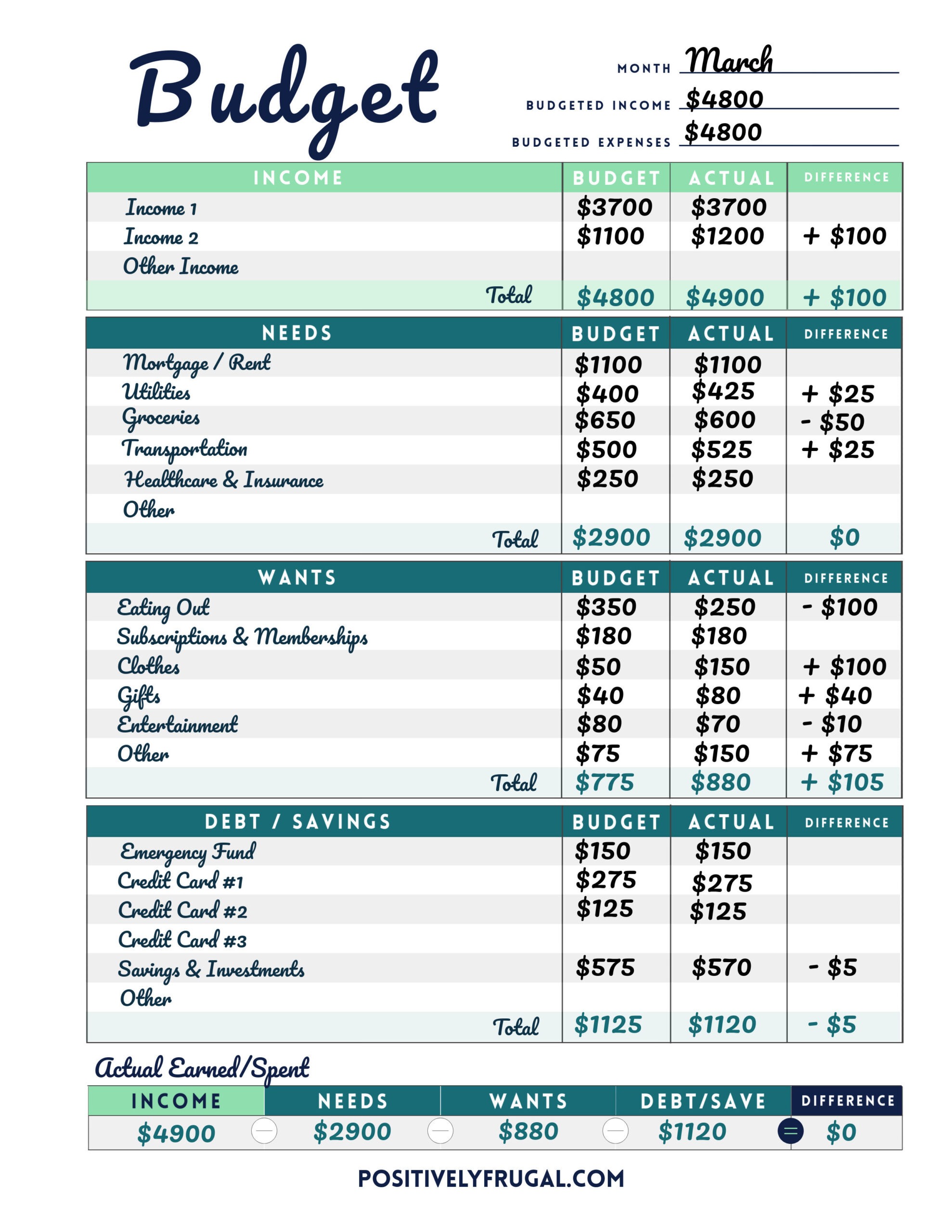
How To Make a Budget and Stick to It
We have covered the basic parts of budgeting – analyzing, planning and taking action. However, sticking to the budget is the tough part. It takes dedication. But if you conquer how to make a monthly budget and stick with your goals, it is well worth the effort!
In the beginning, it is recommended that you revisit your monthly budget regularly to ensure you stay on track. Check in on your budget weekly – or even daily – to ensure you are staying within your self-imposed spending limits.
If you are tracking your expenditures throughout the month and reconciling amounts on your budget worksheet, you will be better able to make adjustments as necessary and will be poised to hit your goal at the end of the month.
In order to stay motivated, use my tips on how to achieve money goals for a few ideas for keeping your financial goal top of mind.
At the end of each month, reassess and rework your budget so that tracking your dollars becomes a habit. As you pay off debt, become savvier with savings and adopt a frugal lifestyle. When you achieve success, shift your goals – and use your monthly budget worksheets to help chart the way!
Tips for How To Create Monthly Budget System
In order to stick to your monthly budget, it is important to use a system that works for you. Personally, I like to use paper to create my budget (yet, I’m most comfortable tracking my expenses in Excel!). For many people, using paper and a pencil is outdated, but rest assured there are several systems for budgeting.
Paper Monthly Budget
What I like about a paper budget is that it is tangible. Plus, making a monthly budget is easy with paper. I can clearly see the numbers – and because I save previous budgets – it is easy to see progress as well.
My template for monthly budget is the perfect place to start for people who like paper.
In addition to my free budget template, I have created an entire suite of affordable budget templates that will help you plan, track and save!
Digital Budget
A digital monthly budget spreadsheet is a fantastic tool! When set up correctly, a digital budget can do the calculations for you. The downside is that developing a monthly budget on the computer takes a little know-how.
If you want to learn how to make a budget in excel, click here.
Apps to Help Budget
There are numerous budget apps that will help you create and track your budget. While I have not tried any budgeting apps, Mint and YNAB monthly budget calculator apps get rave reviews (although, there is a monthly fee after a free trial period).
It is true that there are some benefits to an online monthly budgeter, but I personally feel the budgeting for the month is a hands on process.
Monthly Budget Envelopes
Using envelopes for budgeting is a very tangible way to (literally) handle your money. Once you determine your expenditures within your monthly budget (Step 2), then put the cash amount for each category into an envelope – groceries, dining out, entertainment, etc.
You then manage your monthly budget by only using the money in each envelope for the the category indicated on the envelope. The idea is that you can only spend what you have in the envelope – once it is gone, then you cannot spend any more on that category for the rest of the month.
Get Started with Your Monthly Budget
Regardless of how you opt to create your budget, the sooner you get started, the better. The easiest way to figure out your budget is to get started today!
I’ve shared all of the steps for how to make a monthly budget – now it’s up to you to make it happen.
Interested in more of my Budget and Goal Tips? I round them all up on the Budget & Goals page!
We Want To Know: Do you keep a monthly budget? What works for you – and what doesn’t? Do you have any tips for making a monthly budget that you can share? Tell us in the comments!
Pin It!
